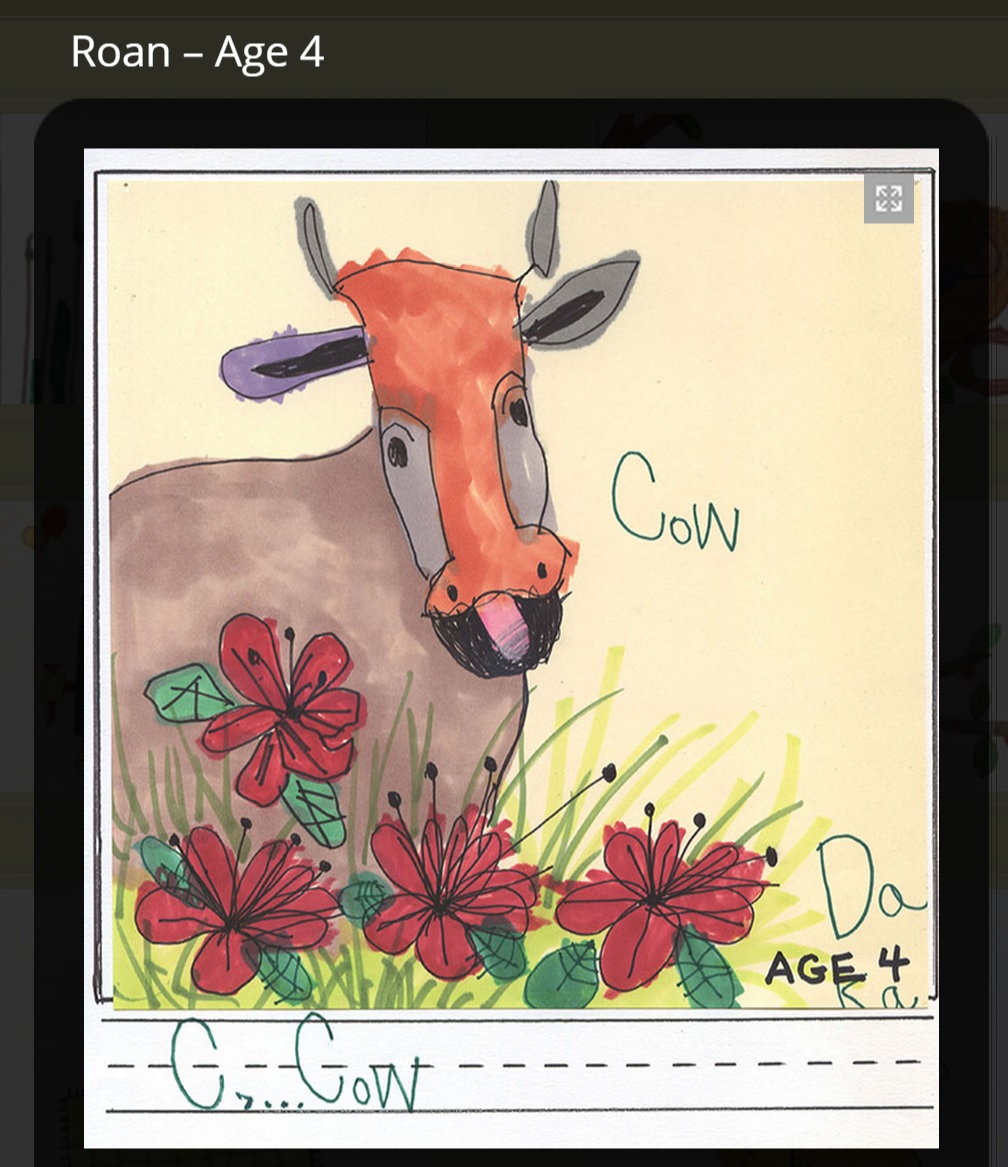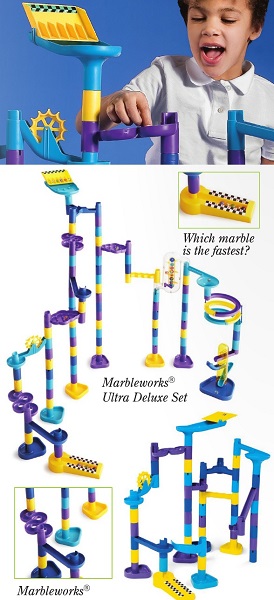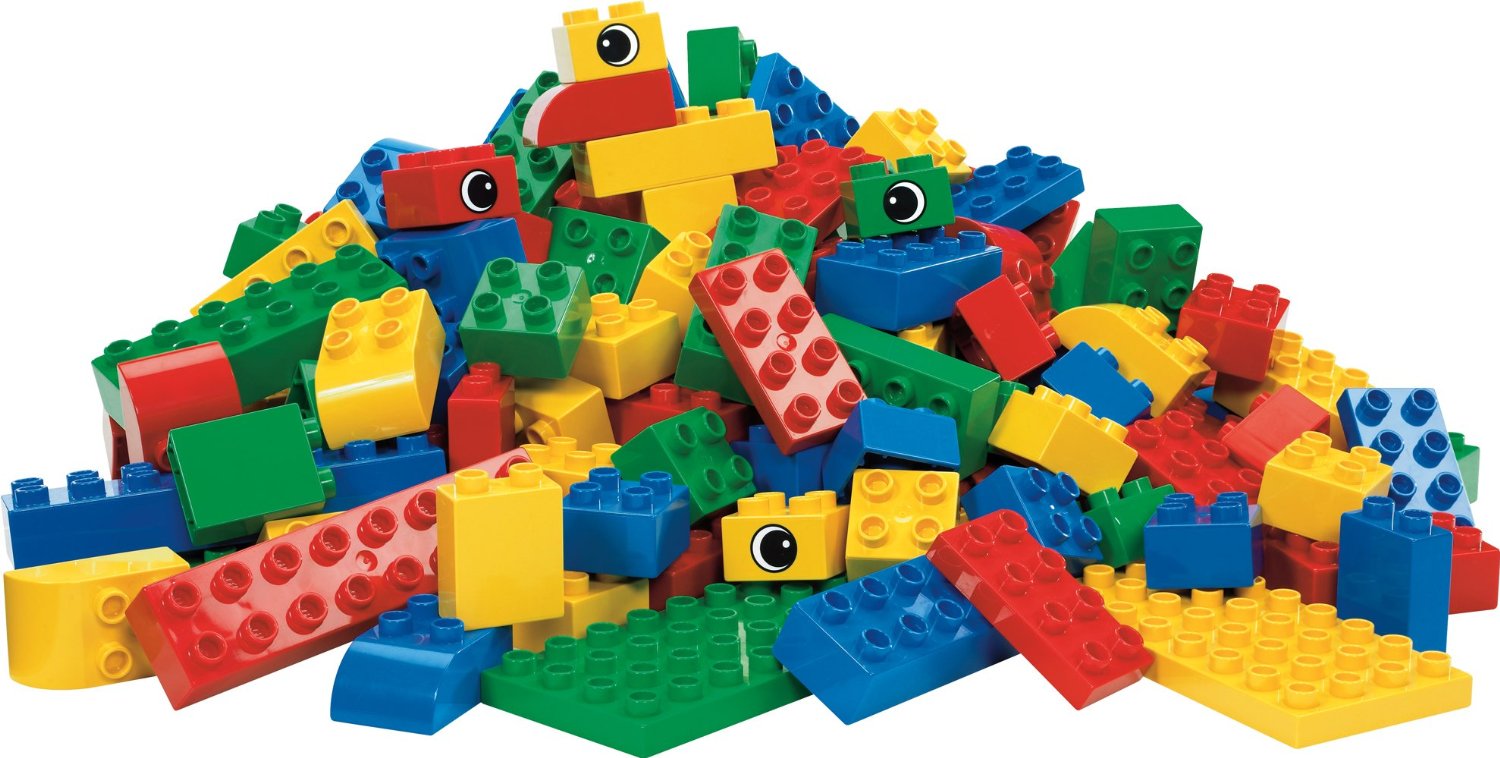
My children are the first grandkids for my parents, which means I donate piles of toys to Goodwill about once a month. To manage our family’s over-busy life, I try to keep our home as simple and direct as possible. Same with parenting. Just last week, my four-year-old asked me, “Mom, who is that guy with the white beard and red coat in all the stores?”
Yes, he meant Santa. In our house, we don’t watch Mickey Mouse, or whatever cartoons advertisers feed children these days to sell their stuff more rabidly. We read classic fairytales. I figure that Spongebob will one day thankfully reside in history’s dustbin, but the archetypal classic stories will give my kids an entree into their culture they’ll enjoy forever. My preschoolers may not know who Santa is, but they have heard about ten versions of Little Red Riding Hood and The Three Bears—and they argue about which is the best.
So we have a house full of testers for classic, multidimensional, multi-age, creative, and imaginative toys. I know middle-class kids like mine don’t need preschool, so we try to set up our house like one, along the Montessori lines of individual responsibility and independent exploration. We’ve sifted through the junk for you. Here’s the short list of quality toys one can buy that will last at least a decade, develop the imagination and a child’s awareness of free-time possibilities, and provide hours of fun for the whole family across it.
1. Wooden Toy Train Sets

My family received a big, metal, Lionel train set when my siblings and I were young. I understand they are classics, too, but for us the setup was too intimidating. It may be a good choice if you have an existing enthusiast in the family. My husband’s uncle, on the other hand, had a brilliant idea maybe two decades ago: He began buying their family Brio train sets and additions every Christmas. Their collection is truly impressive by now, and even though all his siblings are in their twenties they still will congregate in the basement and reconfigure the set for hours together, both the men and the women. My husband has years of happy memories of alone and family play because of his uncle’s excellent idea.
Our library has a train table stocked with Brio, but my son has soured on it because all the other toddlers come by and take over his creations. So, this Christmas, he’s receiving this starter set and an expansion. We plan to add a bit here and there in Christmasses following. By the way, there are now a number of wooden train sets similar to Brio on Amazon, such as the Melissa and Doug brand, but if you’re looking for something to last a long time I recommend you cough up the extra $30 and buy Brio.
2. Wooden Standard-Unit Blocks

While we’re on the natural wood theme, let’s put out a plug for wooden standard-unit blocks. I do recommend the Melissa and Doug on this one, unless you want to get really serious and get a classroom-quality set. Just as with the train set, these are excellent for open-ended, imaginative play. I often have to get my kids started playing with things like this, and with this toy I actually enjoy the time I have to sit there plunking objects about. Next year, you can get the architectural expansion.
By the way, if you’re into this sort of thing, you should know that standard-unit blocks are all the rage in exclusive New York City preschools. Parents even attend block coaching classes and build creations themselves. Seriously. They need coaching on how to play blocks with their children. I should start consulting to make money off this stupidity. And get this:
Studies dating to the 1940s indicate that blocks help children absorb basic math concepts.One published in 2001 tracked 37 preschoolers and found that those who had more sophisticated block play got better math grades and standardized test scores in high school. And a 2007 study by Dimitri Christakis, director of the Center for Child Health, Behavior and Development at Seattle Children’s Hospital, found that those with block experience scored significantly better on language acquisition tests.
3. Legos
Legos have always been overpriced. But they are really the ultimate building toy. For your toddlers, don’t even bother with those stupid Megablocks. Get Duplos, and move up to normal Legos when the youngest child has stopped eating everything in sight.
I prefer to go with the giant tubs approach to Legos, because you get more for your money, but as they get older the kids will really want the special kits. We bought our nephew a Star Wars flyer one Christmas and his eyes about popped out of his head. So keep that in mind. Another thing to keep in mind is that Amazon also regularly has lightning deals on Lego sets, which are hard to spot in time but really do save some money.
4. A Sturdy, Accessorize-able Doll

My daughter is about as girly as a girl can get. That’s all her, because I hate pink and flouncing. Consequently, she has always loved baby dolls. She makes babies out of Lego men and stuffed animals and anything else she can get. So, for Christmas this year, she’s getting an American Girl Bitty Baby—which we bought on eBay, along with a huge assortment of clothes, because $70 for a baby doll (on sale, no less) is utterly absurd. (Don’t worry—my kids can’t read; and even if they could, they’re not allowed on computers, so they can’t find this).
The key for me when buying a doll is longevity and accessorizing opportunities. Melissa and Doug also have a reasonably priced ($20!) baby doll with the same features as Bitty Baby: Soft, huggable body, plastic arms and legs, a full range of accessories. Manhattan Toy’s Baby Stella Peach doll also gets good reviews, has a full range of accessories, and costs $18 (currently, on Amazon sale).
Baby dolls will last a girl until about age 8. Right about then, or maybe age 7 if you have a responsible sort of child, it’s time to graduate to a doll that will last her into her teen years. I was lucky enough to get an American Girl doll after spending a night covering the house in sticky notes demanding one just before my eighth birthday. Although everyone realizes Pleasant Company has gone downhill since Mattel bought them, the dolls are still quality. But they also cost a rather shocking $115, and the non-AG 18″ dolls available have greatly increased in quality since my doll days.

The really granola people will make or buy a soft Waldorf doll (there’s still time before Christmas to be just like Laura Ingalls Wilder’s ma!), and lots of good patterns, tutorials, and completed versions are available on Etsy and Pinterest. Barbie is for people who don’t care about being commercial or who have fond memories about her from childhood. I’m not really for or against these—I just had the time of my life with an American Girl doll until really about age 13, so that’s the one I sentimentalize. Different people will feel differently. AG dolls DO make a girl lust after highly overpriced doll accessories, but I also spent hours making my own doll clothes, furniture, and food, so necessity can mother invention here as in many other respects.
I can’t offer a suggestion about what kind of doll to get sons. We had a boy first, and my mother provided him with a baby doll, which he proceeded to bang against walls until our daughter showed up and rescued the poor thing.
5. An Art Set

There are art supplies, and there are art supplies. Because I took art lessons from childhood through college, I learned early that good supplies are prime. Fortunately, quality supplies for beginners don’t cost much. Here are three items I recommend to anyone on the art spectrum, but especially for young people who have an interest but, in this age of degraded arts instruction in most schools, have little guidance.
First, buy “Drawing With Children,” by Mona Brooks. Despite its title, it is for beginners of all ages. The reproductions of art produced by people ages 2 through 92 after just a little basic instruction will astound and inspire you. If it also intimidates, you should know that the author took pains to select art from pupils who thought the had no artistic talent and were scared to take her class.
Next, to accompany the book, buy a set of Prismacolor Scholar colored pencils, Prang watercolor markers, and (optional but fun) pure pigment acrylic paint. You can get them for dirt cheap here. If you have spent your entire life coloring with Crayola, you will notice and enjoy the difference immediately. As a stocking stuffer, I have found stickers highly pleasing to all ages if you get the right kinds. For example, you can get these at craft stores:

6. A Robot
My definition of “robot toy” is very broad, but it basically means a system of interchangeable parts that can be controlled by some sort of electronic device, configured in several ways, and conveys basic concepts of electronics, mechanics, and/or programming. The clearest example of this is the Lego Robotics sets. If you go for something like this, I think it succeeds best in a context where the recipient will have some sort of guidance and followthrough—such as an engineer parent or access to one of the super Lego Robotics teams all across the country. Throwing an expensive toy like this at a child is not likely to yield great results unless you happen to have one of the rare, highly motivated types.
Another, less expensive toy in this category and with which we have had great success with various nephews and cousins is the Snap Circuits line. The main kit is $50, but the smaller ones are also good and can be had for about $25. Amazon’s offerings of these are also currently on good sale prices.

7. Cars and Trucks
My sister-in-law, who somehow manages to remember my kids’ birthdays and send them gifts for them, is also a toy-picking winner. (Even with that damn Elmo doll, which I hate but my daughter loves to bits.) Everything she sends is a huge hit. It has to help that she has a son a few years ahead of mine.
Anyway, last Christmas she sent my then three-year-old a giant box of Matchbox cars. As a woman, I had no idea how a child could possibly need 50 little cars. Then my mom compounded the pile by also sending a similar number our way. Well, not one of them has arrived at our door in vain. Our son plays with those buggers every single day, in countless ways. Maybe all the other moms know this, but for those who don’t: Get your boy some Matchbox cars. If my brothers and husband are any indication, they will use those cars well into their teens. By then, it’s to memorize makes, models, and years, which my husband can still rattle off like a savant.

Another long-term enjoyment in this category can be had with sandbox-size trucks. We’ve found that the best are Tonka. Get the metal ones if you can squeak out the cash. The ones we had when we were kids are still going strong. With this category of toy, too, I will find myself unsheepishly doodling about alongside the kids in the sand. When I have five minutes, or even when I don’t.
8. Playscapes
Right up there with cars must be a car mat. My son has one of the cheap, plastic car mats, but he’s getting a giant handmade felt one for Christmas. If the use he’s put into the plastic one is any indication, he’ll wear the felt one out.

The girl versions of this are easy. It’s what every girl wants: A dollhouse. Or a horse barn. If you get the barn, the boys will play with it, too. For toddlers, the best brand in this category is still Fisher Price’s Little People. My kids play with their barn almost every day, and the early elementary kids snag it fast when they come over with their siblings for playdates. For older kids, I tend to lean towards the sturdy, simple wooden types over the plastic stickered garbage, but if your little girl wants Barbie’s magic castle or whatever, heck, why not.
This category also includes things like play kitchens and tool benches. Whatever size it is, kids love anything in this vector. If you want to spend a couple hundred (or thousand) on some quality items in this category, or just want to gawk at what you would buy if you, like Hillary Clinton, did have that much to toss about, run, don’t walk, over to Hearthsong or Childcraft. If you have a handy grandfather or husband, you could also just show them the pictures (or this website!) and beg. Try plying them with beer while you’re at it.
9. Toy Guns
I started in as a youngster with the rubber band guns my World-War II grandfather made from scrap lumber. It takes three pieces of wood: An L shape, and an additional short piece clipped to the short side of the L with a stationary rubber band, leveraged by a dowel or some other flat small piece. You can get inexpensive versions online that you don’t have to make. My brothers also loved cap guns. We played cops and robbers for hours as children.
Teens go all-out for Airsoft and paintball guns, and their attractions are well-known, so if you have someone about that age it’s an idea, but be warned that paintball playing is rather expensive so start off a kid who has a job. If you’re a dad, be prepared to go shooting with the kids. My brothers and their friends were paintball fanatics and played every other weekend in the summer,encased in replica military gear like paint “grenades” and armor. It’s good, clean fun, but a day of paintball might set you back $50, and that’s if you have a free field to play in.
For kids who are between the cap gun and paintball stages, Nerf is definitely the way to go. In fact, my three-year-old adores Nerf guns. He chases his uncles all around tarnation in those. Stick some extra foam projectiles into the stocking with that gift, because they get lost in utterly random places.
10. Marbles
Last Christmas, the kids each received a set of marbles in their stockings (something like $4 each, from Amazon). They also happened to receive a marble run, which expands the possibilities of marble play far beyond the (still great) classic game where you draw a circle in the dirt and try to shoot other peoples’ marbles out with yours. We personally like the marble set from Discovery Toys (p. 24). This sort of thing will also engage the entire family for hours, either by free will or incessant nagging from the littles. My son, who is rapidly revealing himself to be as OCD as his mother, also likes to sort marbles, and place them in random containers, and use them for counters in math games.












